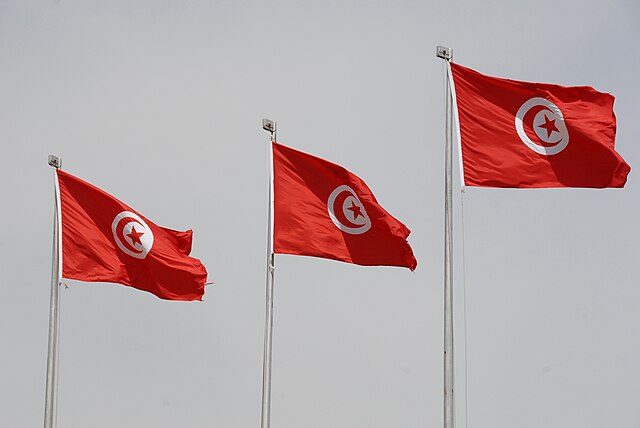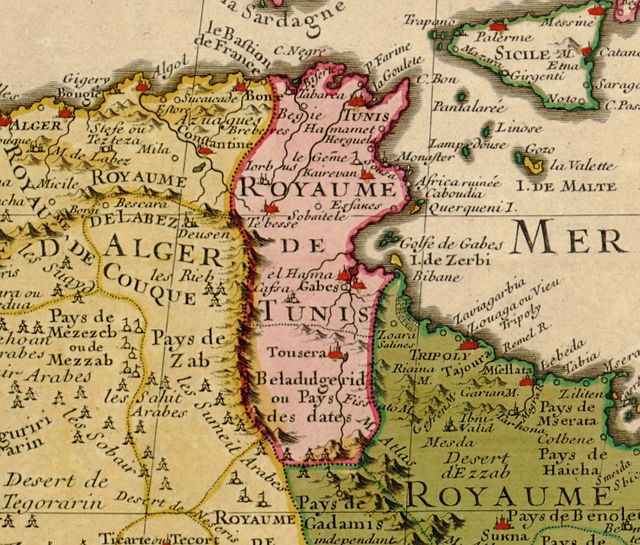The flag of Tunisia is a rectangular panel of red color with an aspect ratio of 2:3. In the center of the cloth in a white circle is placed a red crescent, surrounding a red five-pointed star on three sides. The Tunisian Bey Hussein II decided to create a flag for Tunisia, close in appearance to the modern one, after the Battle of Navarino on 20 October 1827; in 1831 he was officially approved. In that form, the flag existed during the French protectorate, and on 1 June 1959, it was proclaimed the state flag of the Republic of Tunisia. On 30 June 1999, the proportions and design of the flag were clarified by a special law. The general appearance of the flag remained virtually unchanged.
Tunisia flags in Sadiki College
Series of Tunisia flags
Flag hoisted on the National Monument of the Kasbah in Tunis
Tunisian Red Crescent logo, facing left for clear distinction from military roundel
The Beylik of Tunis was a de facto independent state located in present-day Tunisia, formally part of the Ottoman Empire. It was ruled by the Husainid dynasty from 1705 until the establishment of the French protectorate of Tunisia in 1881. The term beylik refers to the monarch, who was called the Bey of Tunis. Under the protectorate, the institution of the Beylik was retained nominally, with the Husainids remaining as largely symbolic sovereigns.
Kingdom (Beylik) of Tunis in 1707
Muhammad III The Bey who was before the French protectorate in 1881
Hammouda I contributed to the prosperity of Tunisia.
Ambassador from Tunis in London in 1781.








